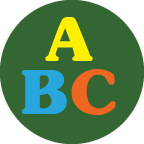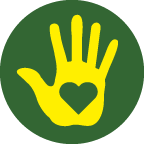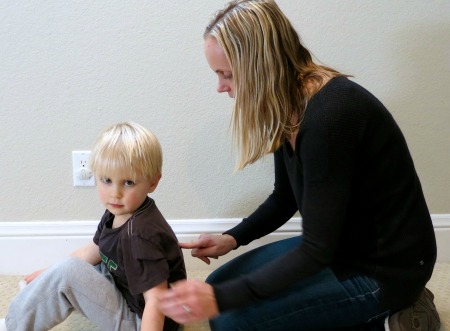O & U
“Back” writing and finding pictures of animals beginning with letter “O”
Instructions

- Draw "O" on child’s back saying the short sound of "O"
- Let child draw "O" on your back while saying "O" sound
- Draw "U" on child’s back saying the short sound of "U"
- Let the child draw "U" on your back while saying "U" sound
- Mix up drawing the letters on the back, asking the child to tell you which letter you drew and sound it makes
- Ask the child to think of an animal that begins with "O" - octopus, osprey, ostrich, otter, etc.
- Find a picture of an animal beginning with "O" and put into 3 ring binder behind the letter "O" (Easy way to find pictures is to type “Free pictures of animals” in internet search engine) or let the child draw a picture of an O animal
- Visit to see a shy animal named okapi with a long tongue
Simplify
Old magazines and newspapers are a great alternative to using the internet to search for pictures. The child can draw their own picture of an animal also.
Extend
Drawing letters on a child's back is a fun way to review the alphabet. Once a child recognizes the letters "O" and "U", write other letters of the alphabet on their back. Letters practiced in earlier months are D, M, C, R, B, F, A, and E. Next, tell the child you are going to write a word on his back and use your finger to write the letters in the child's name. See if the child can recognize the first letter you write or the whole name.
QUESTIONS FOR CHILD
Why is your name important?
Why do you think your parents chose this name for you?
Materials
- 3 ring binder with alphabet dividers (Began animal binder Month 1 Activity 5)
-
picture of animals
Curriculum Plan Resources
Skills Focus
- Shape - Rectangle
- Color - Orange
- Number - 1-4 Review
- Alphabet - O, U
- Senses - Sight
- Character Trait - Responsibility
- Target Words - Under, Up, Down, Tall
Monthly Proverb
Yiddish- If each person sweeps in front of his own door the whole street is clean
Did You Know?
"The brain builds itself in response to the child’s experiences. Brain circuits that the child uses in daily life are strengthened. Those that the child doesn’t use fade away. "
National Research Council From Neurons to Neighborhoods, 2000
Books to Read
"AlphaBugs: A Pop Up Alphabet Book"
by David Carter (Activity 1)
"Deep In The Swamp"
by Donna Bateman (Activity 22)
"Head to Toe"
by E. Carle (Activity 10)
"AlphaBugs: A Pop Up Alphabet Book". VIDEO
by David Carter (Activity 1)
"Head to Toe". VIDEO
by Eric Carle (Activity 10)
"Deep in The Swamp". VIDEO
by Donna Bateman (Activity 22)
Music Playlist
"When The Saints Go Marching In"
by Pete Fountain, Album: Do You Know What It Means to Miss New Orleans? (Jazz) (Activity 2)
"Go, Flush, Wash, Dry"
by Martin Kerr, Album: Favorite Songs from the Family Learning House (Children) (Activity 24)
"The Noble Duke of York"
by Susan McRae, Album: Barney’s Song Book - 16 Favourites for Kids (Children) (Activity 15)
"When The Saints Go Marching In" VIDEO
by Pete Fountain (Activity 2)
"The Noble Duke of York" VIDEO
by Barney's Magical Musical Adventure (Activity 15)
"Go, Flush, Wash, Dry" VIDEO
by Martin Kerr, Album: Favorite Songs from the Family Learning House (Children) (Activity 24)
Monthly Materials List
Click Here to view the list!
Fingerplay / Poems / Songs
Sing/Say The Alphabet
(Activity 26 Month 5)
ABCDEFG HIJKLMNOP QRSTUV WXYZ
Now I’ve said my ABC’s, Next time won't you sing with me.





